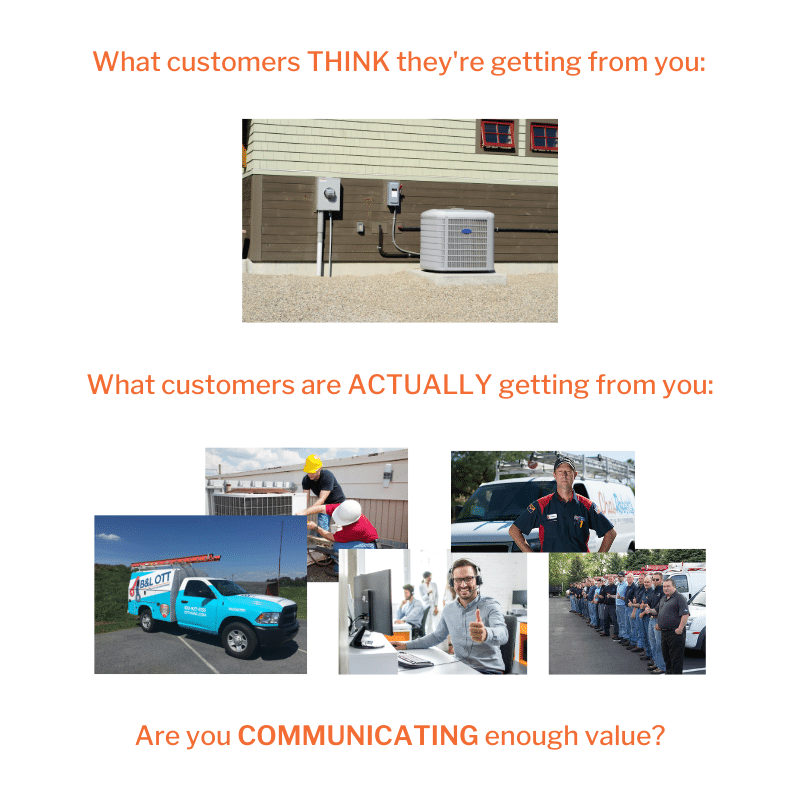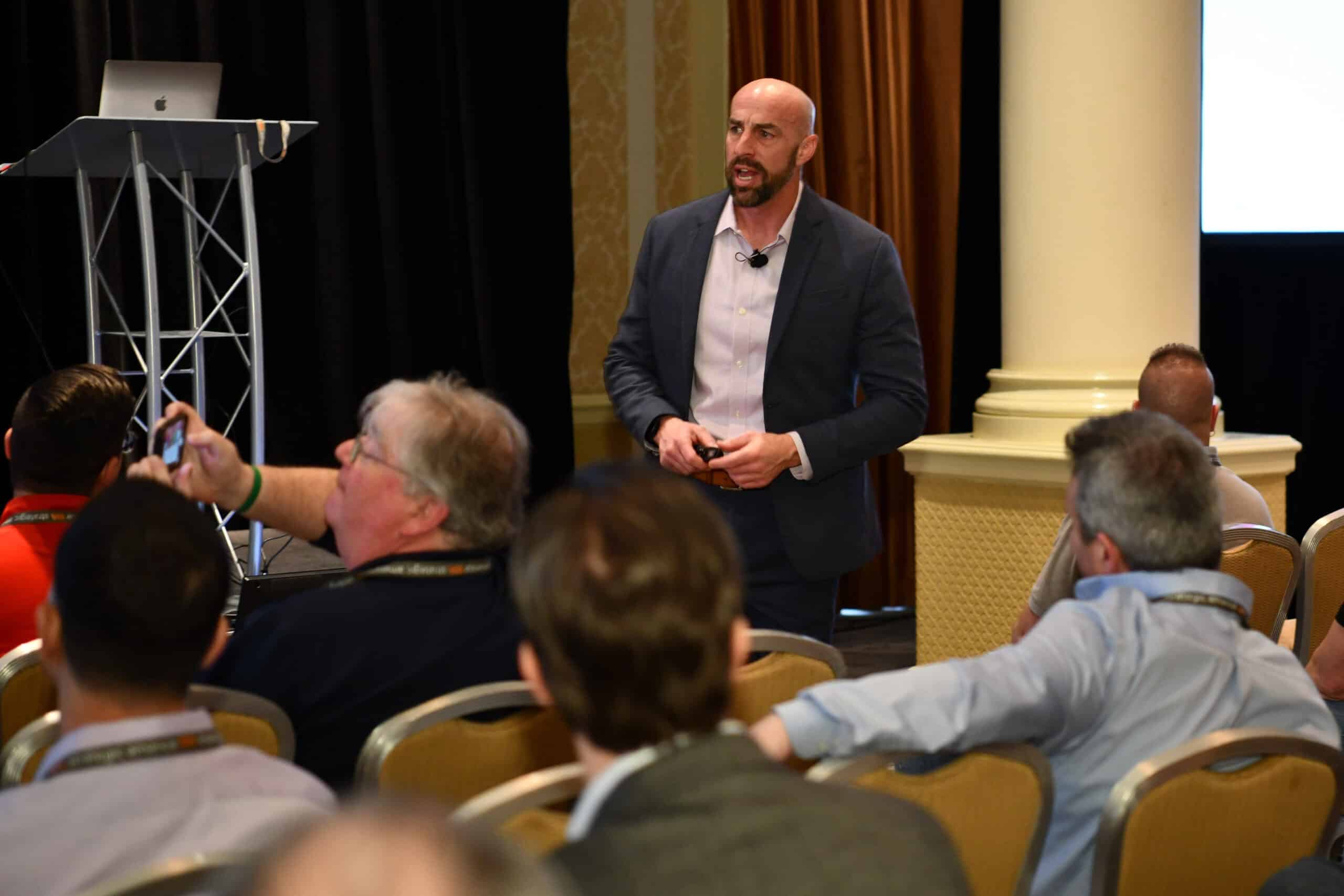Everyone in the Contracting World is wondering what to call their “Dispatch Fee…”
Some of the popular choices on the market include:
- Trip Charge Fee
- Diagnostic Fee
- Service Call Fee
- Call-Out Fee
- Inspection Fee
But if I may, I’d like to assert that “what should I call my fee?” is the wrong question to be asking. It’s wrong because all of the options I just listed are focused around the WORST word possible… the one word every customer in all cultures hates to hear:
FEE.
It’s the “F” word for customer service and sales. Nobody wants to pay your “fee.” This is what customers feel like when you use the word “fee”:

If you use the word “fee,” customers will see right through you, regardless of what you name it. What you need is not a clever name for you “dispatch fee…”
What you need is a VALUE STATEMENT. A clear and helpful way to communicate the value of your company BEFORE you present any “fees.”
A value statement gets to WHY your customer should trust you, not WHAT they have to pay you. A value statement helps the customer visualize what will happen next. It removes uncertainty, makes people willing to pay your “fees,” and gives your team members more confidence in talking about your service.
The worst thing I hear CSRs say about their “fee” is this (and everyone says it…):
“It’s gonna be $89 for us to come out.”
Seriously? $89 for you to “come out?” No, thank you. I’ll pick the technician up myself. I’ll drive to your office, pick him up, and he can use my tools, too. One of my neighbors told me it should be an “easy fix.” But I’m not paying $89 for someone to “come out” to my home.
It’s no wonder customers push back on the price all the time…

Some Contractors try to rationalize price objections by saying “well, you got to weed out the tough customers somehow!” or “we don’t want to work with the cheap ones!” Well, guess what…
They don’t want to work with you either, because you’re not building any VALUE!
Customers are not “price shoppers” like we tend to think – they are VALUE SHOPPERS! If you make it a priority to communicate more value over the phone, you’ll be shocked at how many of your lowly “price shopping” customers actually turn into high-quality, high-paying loyal customers for life! Because they weren’t looking for the lowest “fee” like you thought. No, they were looking for the greatest value.
Tired of your team under-selling you?
Tired of customers pushing back on your “fee?” Follow this helpful template for crafting your own value statement, the kind of statement that tells the customer WHY they should work with you, not WHAT they have to pay you:
When Communicating Value to your customers, talk about:
- The Technician
- The Company
- The Truck
- The Inspection
- The Consultation
- The Price
Here’s an example:
“Mr. Jones, I’ve got your appointment booked for this afternoon at 2. No let me tell you how we work… We’re going to send a licensed technician out to your home, someone who’s backed by our company that’s been in business for more than 20 years – you’re in very good hands. He’ll arrive in a fully-stocked, marked truck, so you’ll know it’s us when he pulls up, and he’ll have all the parts and tool he needs to get started as soon as he arrives. The first thing he’ll do upon arrival is inspect the unit/problem to determine the full scope of work and the root cause of the problem. Once his inspection is complete, he’ll sit down with you to do an in-home consultation. This is where he’ll walk you through his findings and provide you with all the options you have for taking care of the unit/problem. As part of that consultation, he’ll also give you up-front pricing so you can make a smart choice for your budget. To have the technician come out and do all this, it’s only $89. And with that Mr. Jones, you’re all set.“
Notice two things I did:
- I never used the word “fee” or even gave the “fee” a name. Instead, I built value and helped the customer visualize what will happen when the technician arrives.
- I didn’t pause after the price. Pausing after you present your value is an invitation for the customer to be concerned. Instead, I added closure and established confidence by saying “And with that Mr. Jones, you’re all set.“
I gave the customer a reason to pay $89, not a name for the $89.
There are several other ways to communicate value to your customers, both on the phone and in the home. But this template is a great place to start.
Want to hear examples of the value statement on real calls? Want to see how other companies customize the value statement to fit their needs and create a unique experience for their customers?
Join us this Friday at 11 am MST / 1 pm EST for a special episode of “This Call May Be Recorded,” where we’ll be listening to real Contractor phone calls that include effective value statements and breaking down what makes them work.
Say goodbye to the word “fee” forever.
You can tune in with your team here:



